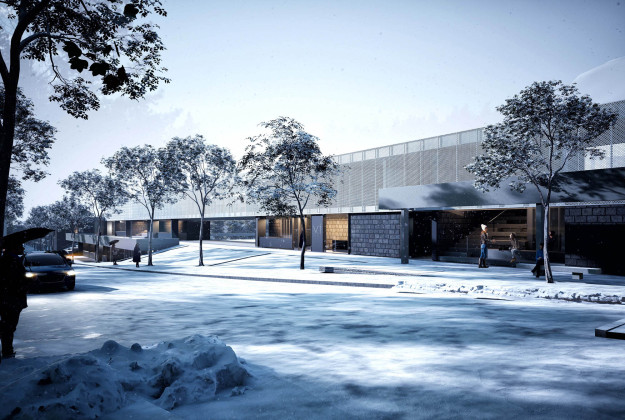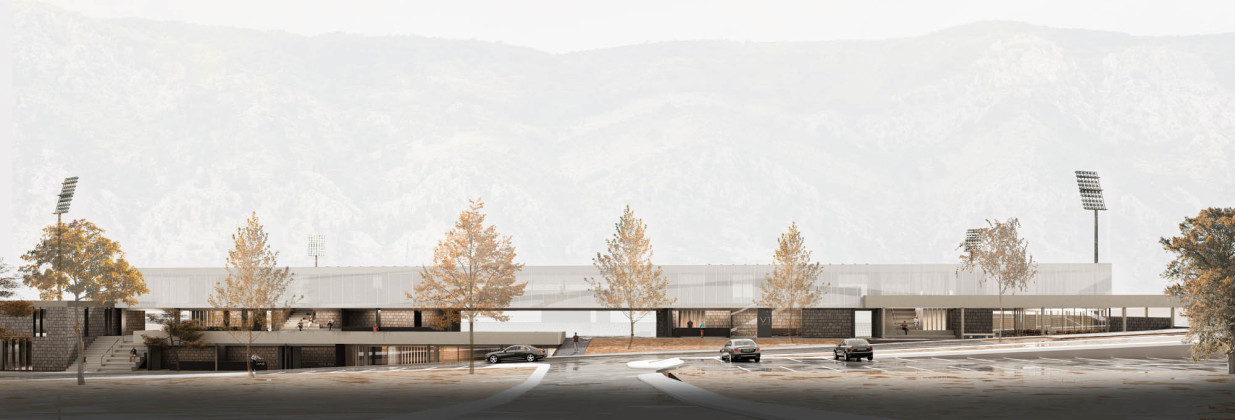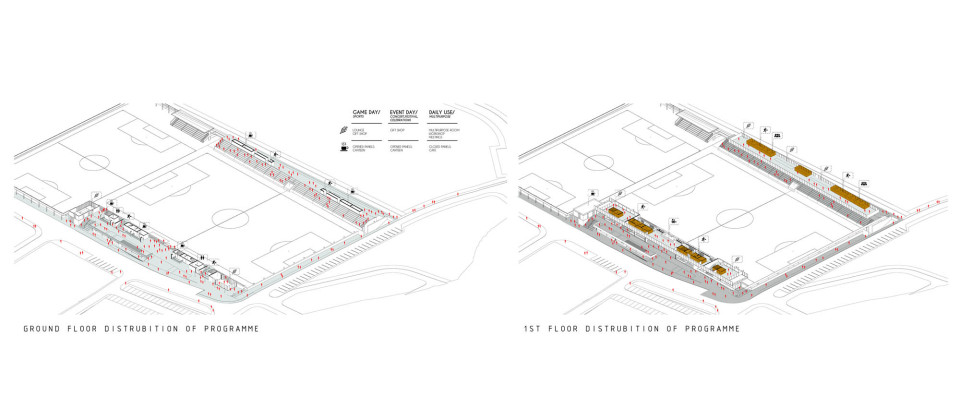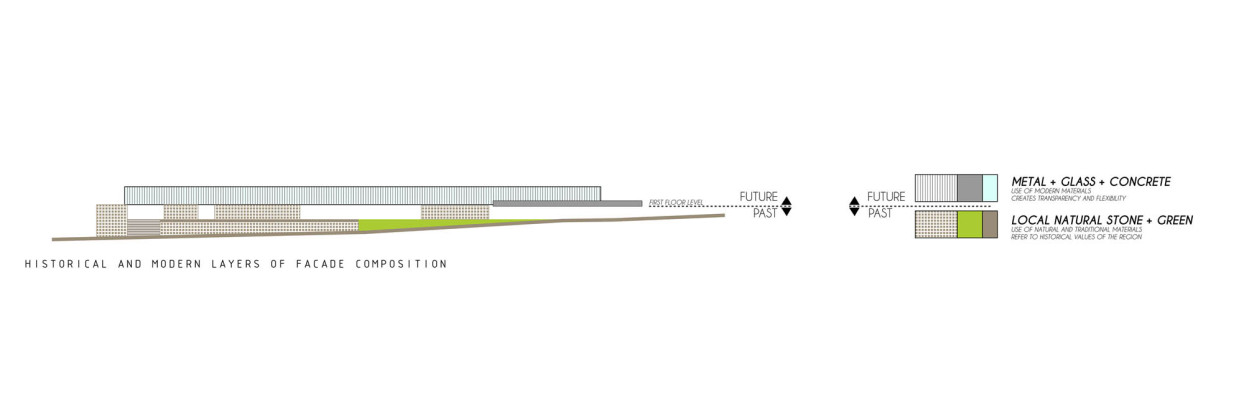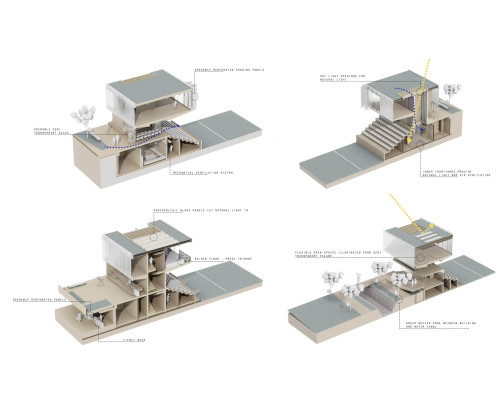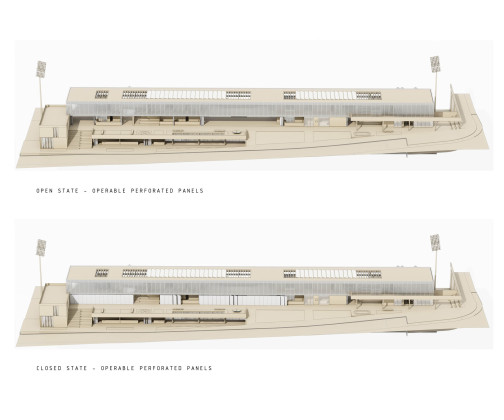International Concept Design Competition for the Bokelj Football Club Stadium in Kotor - 1st Prize
A Stadium Accessible For All: "Kotor Club Bokelj Stadium" in Montenegro
Arkinom and Dodofis have been selected to design Kotor Stadium for Football Club Bokelj, in Montenegro. Designed to be a stadium as public space and part of daily use with its outdoor facilities and flexible inner spaces.
Kotor is a unique region with its historical background and geographical location. This urban fabric of Kotor where the project area is located, is stuck between surrounding cliffs and the coast, therefore it is located in a place with limited opportunities in terms of producing wide public areas and gathering spaces. These specific inputs of the context make the spatial of the project site, a valuable potential public space for residents.
To achieve a neighborhood stadium that is accessible to everyone, a green platform is created along the west and east stands. In this way, both fan/supporters’ exits and public spaces (like open sport fields-playgrounds etc.) where young people and children can participate in sports activities, are organized along this green platform.
Besides this; creating a mid-level/green platform that’s providing both circulation and public use, by lifting up the mass that is containing VIP areas, protocol and flexible inner spaces, a visual integrity has been achieved that makes stadium transparent, it is to speak, visible from the outside and avoids creating a visual barrier for neighborhoods.
Considering stadium holding a wide spatial area for the city, it is important to avoid visual barriers and functionally lost/closed spaces for the city. On that purpose, a multipurpose hall has been arranged at the south-west corner of the stadium to make public gatherings and meetings possible. At the north part of this valuable side facing Iva Brkanovica street, a souvenir shop for Club Bokelj (sports equipment etc.) and cafés, restaurants has been arranged. Below the midpoint of the green platform, player entrance, press entrance and VIP- Protocol entrance are organized that can work separately. Thanks to the centralized plan of the ground level and easy access from the street, medical and press conference-work areas can give public service as suggested in UEFA regulations.
The proposed design aims to create a transparent- multipurpose- accessible intersection between the field and the urban fabric. In addition to this, at the facade of the basement level, historical limestone, which is important to the history of the city, is used to adapt the old town. Above this level, using glass and perforated transparent metal surface reflects the city’s layered structure between historical background and modern- touristic face.
Related Content:
-

Shaping the Future of Energy: Iceland Competition Winners Announced
-

The New School in Stara Boleslav Will be Built According to Chybik + Kristof’s Design
-

Development of a Master Plan for Grozny in the Chechen Republic
-

European Award for Architectural Heritage Intervention (AHI)
-

Kaira Looro Architecture Competition 2023
 19.04.2023
19.04.2023



